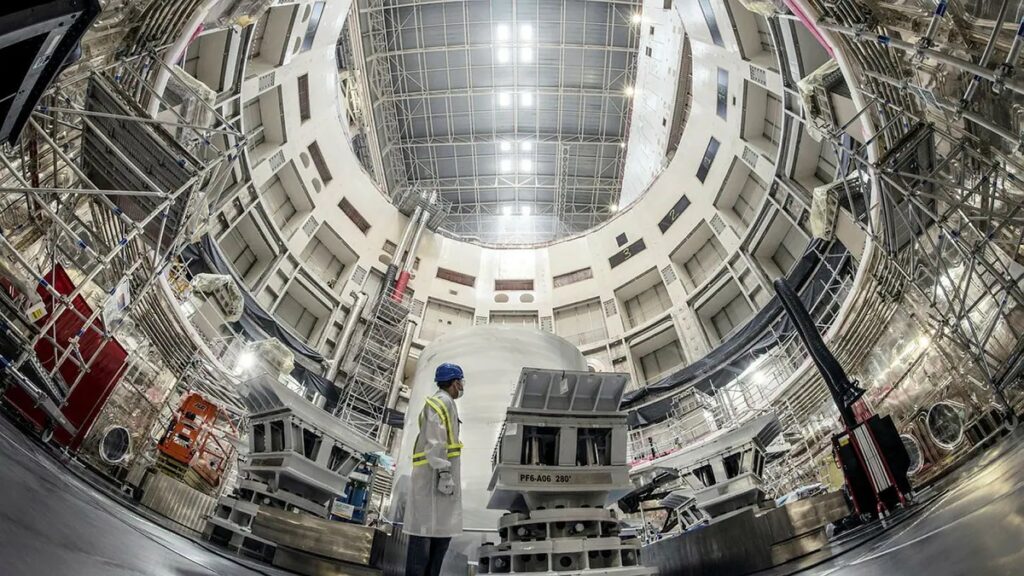The Iter international nuclear fusion project, which aims to revolutionise energy production, faces delays that are yet to be determined because several essential parts are defective, according to its director general.
The first production of plasma, essential for fusion, had been planned for 2025, but that deadline cannot be met, Iter’s new director general, Pietro Barabaschi, told French news agency AFP on Thursday.
Barabaschi was appointed in September to head the international research project, which brings together seven partners: China, South Korea, the United States, India, Japan, the European Union and Russia.
The setbacks will also have a financial impact.
“First of all, gaps of up to two centimetres have been found in parts that need to be welded together to form the ‘vacuum chamber’,” the giant air chamber where the fusion reaction will take place, Barabaschi explained.
Three of these ‘sectors,’ which have already arrived at the Iter site in Saint-Paul-les-Durance in Provence, southern France, are concerned. One of them had already been installed in the pit in which the experiment is to take place and will have to be removed.
The second defect noted was traces of corrosion on the ‘thermal shields’ that should protect against the very high heat emitted during fusion. This could lead to leakage of the helium used in the cooling circuit.
Repairing the defects will delay the project. “It’s not a process that takes weeks, but months or even years,” said Barabaschi, who is expected to draw up a new operations timetable by the end of the year.
Iter is expected to reach full power in 2035.

